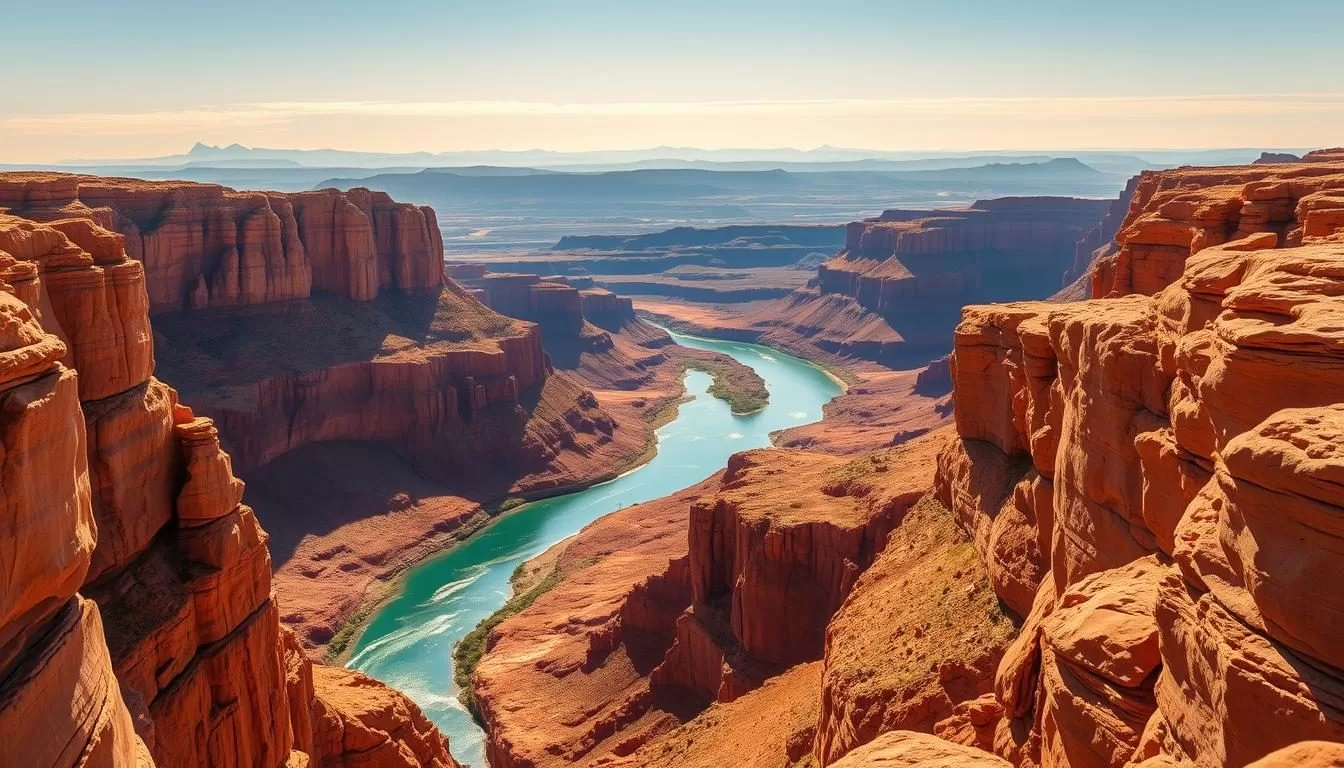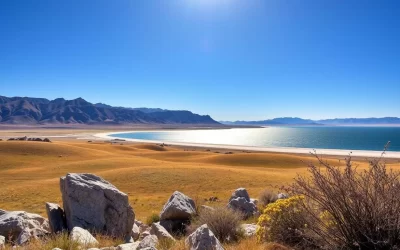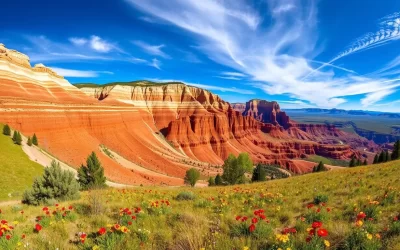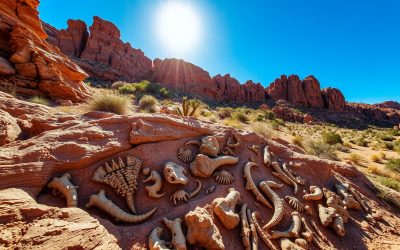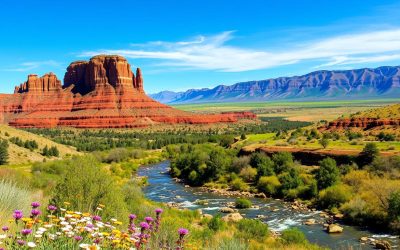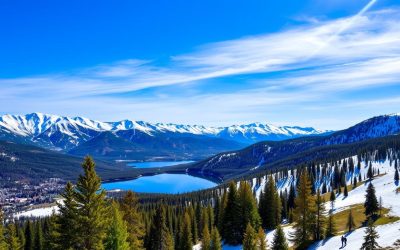You’re in for a treat if you’re planning to visit one of Utah’s most spectacular natural treasures. Dead Horse Point State Park offers breathtaking panoramic views of canyons carved by the Colorado River, making it a must-see attraction.
Located just 40 minutes from Moab and adjacent to Canyonlands National Park, this park provides similar jaw-dropping vistas without the crowds. The unique name originates from a legend about cowboys corralling wild mustangs on the mesa point.
Whether you’re looking for hiking, mountain biking, or stargazing, this guide will help you make the most of your visit to this spectacular state park. With its dramatic overlooks and world-class trails, you’ll experience the natural beauty of Utah.
Discovering Dead Horse Point State Park
Dead Horse Point State Park is a gem in Utah’s natural landscape, offering breathtaking views and a rich history. As you explore this unique destination, you’ll uncover the fascinating stories and natural wonders that make it so compelling.
The Legend Behind the Name
The name “Dead Horse Point” originates from a legend about cowboys who corralled wild mustangs on the mesa, only to leave some trapped without water. This legend has become an integral part of the park’s identity, drawing visitors interested in its history and natural beauty. The story tells of cowboys selecting the best horses and abandoning the rest on the point, surrounded by the Colorado River 2,000 feet below.
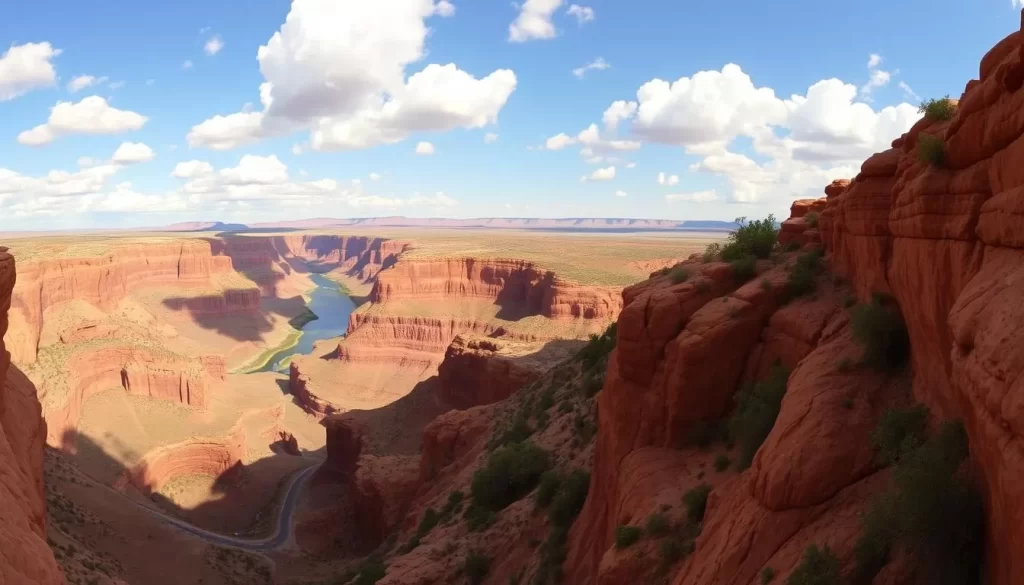
Location and Park Overview
Dead Horse Point State Park is situated east of Canyonlands National Park, making it an ideal stop for those exploring the area. The park is a long, narrow mesa with a distinctive “neck” that leads to a final outcropping of land with dramatic drop-offs on three sides. You can reach the park via a 45-minute drive from Moab, Utah, by taking UT-313 from US-191.
Why Visit Dead Horse Point State Park
Visiting Dead Horse Point State Park offers a unique experience, with its diverse ecosystem supporting juniper and pinyon trees, various desert plants, and wildlife adapted to the high desert environment. At an elevation of about 6,000 feet, the park provides spectacular views with significantly fewer crowds than its neighboring national parks, making it an attractive destination for those seeking a more intimate experience.
Planning Your Visit to Dead Horse Point State Park
To make the most of your trip, planning your visit to Dead Horse Point State Park is essential. This step ensures that you’re prepared for the adventure ahead, whether it’s hiking, biking, or simply taking in the breathtaking views.
Best Time to Visit
The best time to visit Dead Horse Point State Park is during the spring (April-May) and fall (September-October), when temperatures are moderate, making it ideal for outdoor activities. Avoid the extreme heat of summer months (June-August) when temperatures can soar above 110°F. If you’re visiting in winter (December-February), be prepared for cold conditions and potential snowfall.
Entrance Fees and Hours
Before heading to Dead Horse Point State Park, note that the entrance fee is $20 per vehicle for up to 8 people, valid for 2 days. Alternatively, it’s $10 per motorcycle or $10 for walk-ins and bike-ins. The park is open year-round from 6 am to 10 pm.
How to Get There
Accessing Dead Horse Point State Park is straightforward; it’s a scenic 45-minute drive from Moab. Take US-191 and turn onto UT-313, following it until it ends at the park.
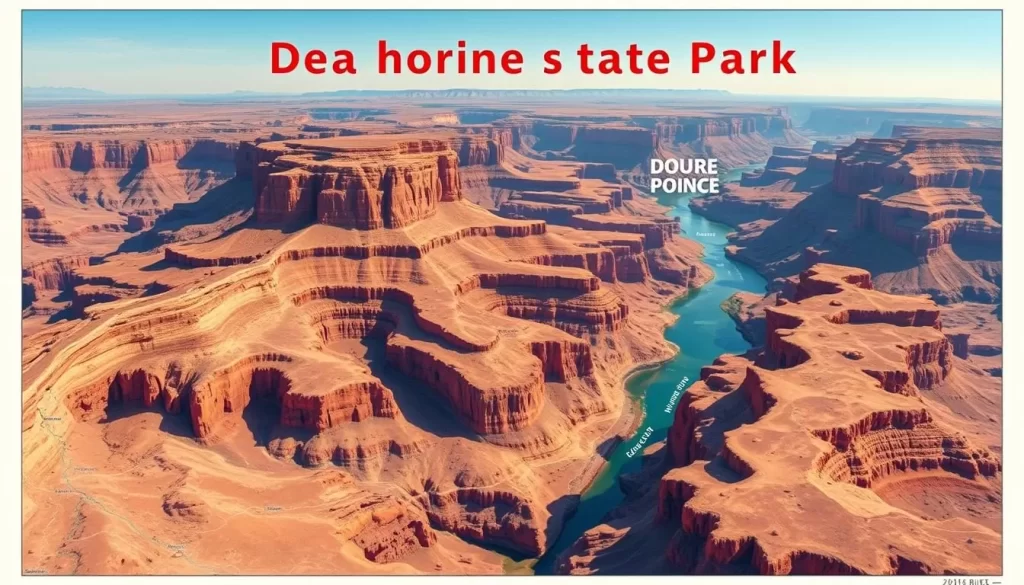
What to Pack for Your Visit
When visiting Dead Horse Point, it’s crucial to pack essentials like plenty of water (at least one gallon per person per day), sun protection, sturdy hiking shoes, layers for temperature changes, snacks, a camera, and a detailed park map. Being prepared will enhance your experience and ensure a safe visit.
By considering these factors, you can have a well-planned and enjoyable trip to Dead Horse Point State Park, making the most of your time and creating lasting memories.
Dead Horse Point State Park, Utah: Best Things to Do – Top Picks
As one of Utah’s most spectacular state parks, Dead Horse Point offers an array of unforgettable experiences, from breathtaking viewpoints to exciting trails.
Dead Horse Point Overlook – The Crown Jewel
The Dead Horse Point Overlook is the park’s most famous viewpoint, offering a breathtaking panorama of the Colorado River as it twists through the canyon 2,000 feet below. The best view is looking southwest from the overlook, where you can see the gooseneck of the Colorado River with Canyonlands National Park in the background.
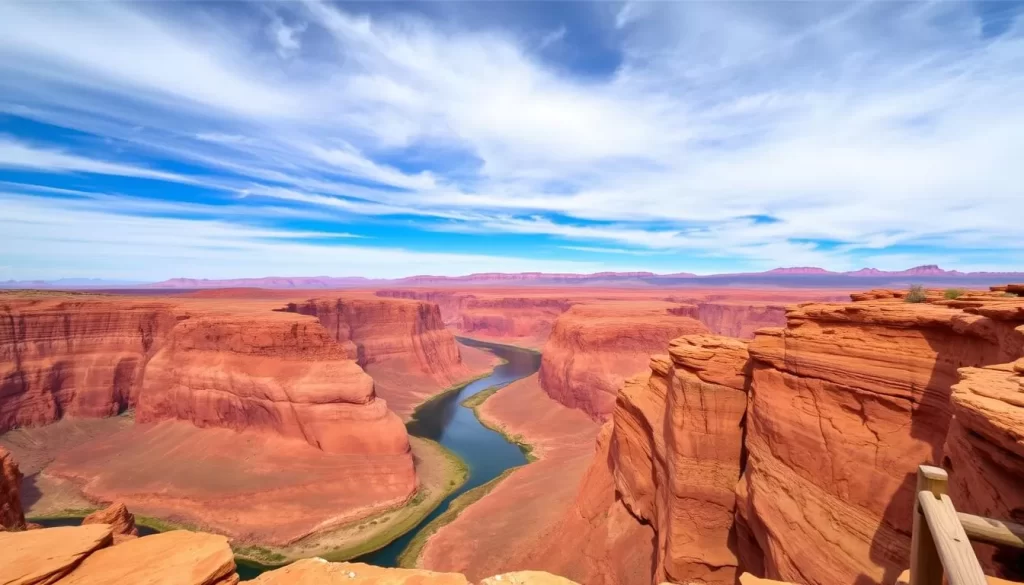
Colorado River Viewpoints
Visiting the Colorado River viewpoints is a must-do experience, offering different perspectives of the mighty river that carved these impressive canyons over millions of years. The most accessible viewpoint is just a short 1-mile round trip hike from a designated parking area.
These viewpoints provide breathtaking views of the river and the surrounding landscape, making them perfect for photography, especially during golden hour.
Visitor Center Exhibits
The Visitor Center is another highlight of your visit, featuring informative exhibits on the park’s geology, wildlife, and human history. You can also enjoy panoramic views of the surrounding landscape from the center’s observation deck.
By exploring the Visitor Center, you’ll gain a deeper understanding of the park’s unique features and the forces that shaped them.
Whether you’re interested in photography, hiking, or simply taking in the views, Dead Horse Point State Park has something for everyone. Be sure to take advantage of the relatively uncrowded nature of the park to fully immerse yourself in the spectacular scenery.
Hiking Trails in Dead Horse Point State Park
With its breathtaking views and diverse landscapes, Dead Horse Point State Park is a hiker’s paradise. The park offers several trails that cater to different skill levels and preferences, ensuring that every visitor can enjoy the natural beauty of this unique location.
East Rim Trail
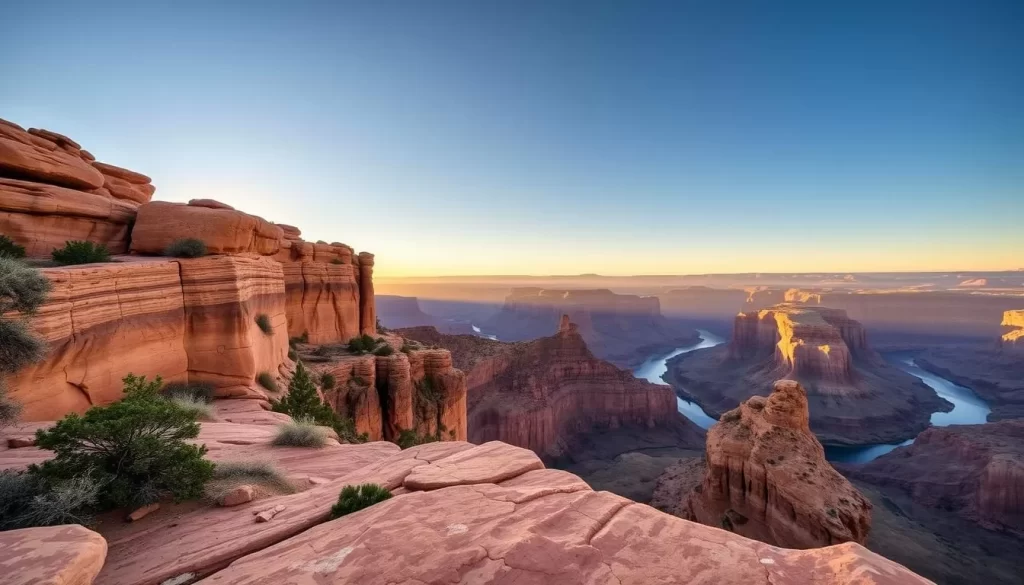
The East Rim Trail is a relatively easy 2-mile one-way path that connects the Visitor Center to Dead Horse Point Overlook. This trail offers beautiful views of the La Sal Mountains and is suitable for families and casual hikers. You can enjoy the scenic vistas and take in the tranquility of the surroundings.
West Rim Trail

For a more adventurous experience, the West Rim Trail is a 3.5-mile one-way route that features jaw-dropping views across the Colorado River to Canyonlands National Park. This trail includes short sections of rock scrambling and is marked by cairns, making it a more primitive and exciting hike. You will be rewarded with spectacular views and a sense of accomplishment.
Big Horn Overlook Trail
If you’re looking to extend your hiking experience, the Big Horn Overlook Trail is a 2.5-mile round-trip detour that takes you to additional viewpoints with expansive vistas of the surrounding canyon landscape. This trail is perfect for those who want to explore more of what Dead Horse Point State Park has to offer.
Whether you’re hiking the East Rim Trail, West Rim Trail, or Big Horn Overlook Trail, you’re sure to be impressed by the natural beauty and diverse landscapes of Dead Horse Point State Park. The trails are rated easy to moderate in difficulty, with minimal elevation change, making them accessible to a wide range of hikers.
Best Viewpoints and Photography Spots
The park’s unique geography provides a variety of vantage points, including Rim Overlook, Meander Overlook, and Basin Overlook, each offering a distinct perspective on the natural beauty of the area. As you explore Dead Horse Point State Park, you’ll find that these viewpoints are not only breathtaking but also provide ample opportunities for capturing stunning photographs.
Rim Overlook
Accessible via the west side of the Rim Trail, Rim Overlook is a must-visit for its expansive views of the canyon landscape. The golden hours of early morning and late afternoon are particularly dramatic, making it an ideal spot for photography.
Meander Overlook
Another highlight is the Meander Overlook, accessible via the West Rim Trail, starting from the Wingate Campground. This viewpoint offers a spectacular sight of the Colorado River as it makes a graceful turn through the canyon, creating one of the most photogenic scenes in the park.
Basin Overlook
For those looking for a slightly easier hike, the Basin Overlook on the East Rim Trail is recommended. Starting from the Kayenta Campground, this trail offers breathtaking panoramic views of the canyon’s vastness and the La Sal Mountains in the distance.
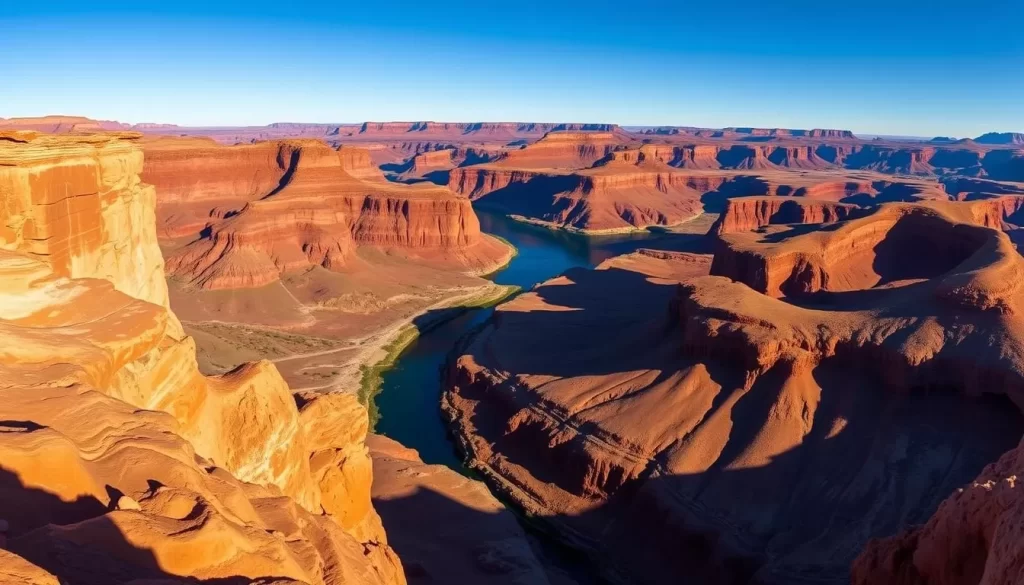
Sunset and Sunrise Photography Tips
To capture the best photographs, plan your sessions for sunrise and sunset when the low-angle light creates dramatic shadows and highlights the rich hues in the sandstone formations. Positioning yourself at Dead Horse Point Overlook for sunset is particularly rewarding, as the sun sets directly in front of this viewpoint, creating spectacular backlighting for the iconic gooseneck bend in the Colorado River.
| Viewpoint | Trail Access | Notable Features |
|---|---|---|
| Rim Overlook | West Rim Trail | Expansive canyon views, dramatic during golden hours |
| Meander Overlook | West Rim Trail from Wingate Campground | Spectacular view of Colorado River meandering through canyon |
| Basin Overlook | East Rim Trail from Kayenta Campground | Panoramic views of canyon and La Sal Mountains |
Mountain Biking Adventures
Explore the world-class mountain biking trails at Dead Horse Point State Park. The park is renowned for its Intrepid Trail System, which offers 16.6 miles of non-motorized singletrack trails for you to discover.
Intrepid Trail System
The Intrepid Trail System is a mountain biker’s dream, featuring trails that wind through beautiful juniper and pinyon forests over slickrock terrain with spectacular canyon views. You can choose from trails of varying difficulty levels, from beginner-friendly loops to more technical routes that challenge even experienced riders.
Experience the thrill of riding on the Intrepid Mountain Biking Trail, which showcases the park’s stunning desert landscape. With its diverse terrain and breathtaking views, this trail is a must-ride for any mountain biking enthusiast visiting Dead Horse Point.
Bike Rentals and Guided Tours
If you didn’t bring your bike, you can rent one near the park entrance at the Moenkopi Yurts from Bighorn Mountain Biking. Consider booking a guided mountain biking tour to maximize your experience with local experts who can show you the best routes based on your skill level and provide insights about the area’s geology and ecology.
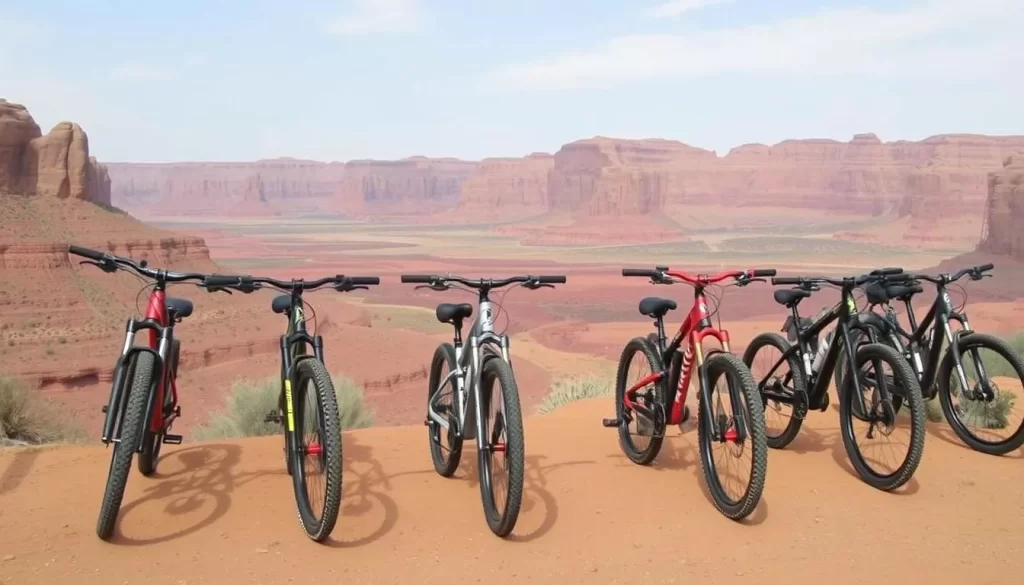
To make the most of your mountain biking adventure, plan your ride for the cooler morning hours, especially during summer months, and don’t forget to bring plenty of water.
Stargazing at an International Dark Sky Park
Dead Horse Point State Park offers an unparalleled stargazing experience, thanks to its designation as an International Dark Sky Park in 2016. The park’s remote location ensures that the skies are incredibly dark, making it an ideal spot for viewing the night sky.
Night Sky Programs
During certain times of the year, the park offers ranger-led night sky programs. These programs are a fantastic way to learn about the constellations and celestial objects visible in the night sky. Knowledgeable staff use telescopes and laser pointers to guide you through the darkness, pointing out planets, stars, and other wonders.
Best Spots for Stargazing
The main overlooks at Dead Horse Point State Park, such as Dead Horse Point Overlook and Rim Overlook, offer expansive views of the night sky. These areas are perfect for setting up your telescope or simply gazing up at the stars.
Photography Tips for Night Sky
To capture the beauty of the night sky, bring a tripod, a camera with manual settings, and a wide-angle lens with a large aperture (f/2.8 or wider). This will help you photograph the Milky Way arching over the canyon. Consider staying overnight at one of the park’s campgrounds or yurts to fully experience the transition from sunset to full darkness.
| Stargazing Tips | Description |
|---|---|
| Best Time | Seasonal night sky programs are available; check park schedule |
| Best Locations | Dead Horse Point Overlook and Rim Overlook |
| Photography Gear | Tripod, camera with manual settings, wide-angle lens (f/2.8 or wider) |
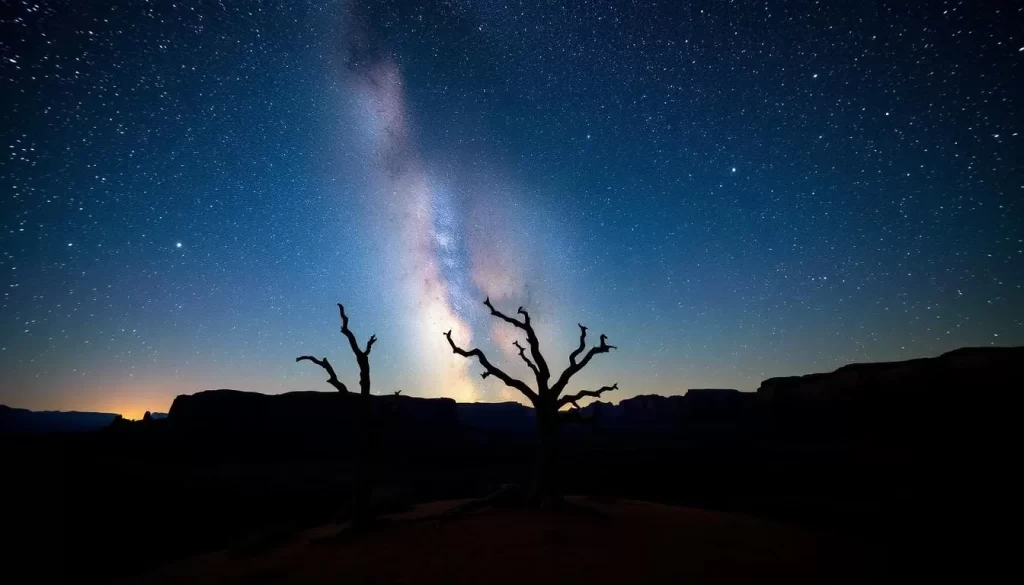
Where to Stay Near Dead Horse Point State Park
Whether you prefer camping or luxury hotels, there’s a place to stay near Dead Horse Point State Park that suits your needs. The park offers various accommodation options to enhance your visit.
Camping Options Within the Park
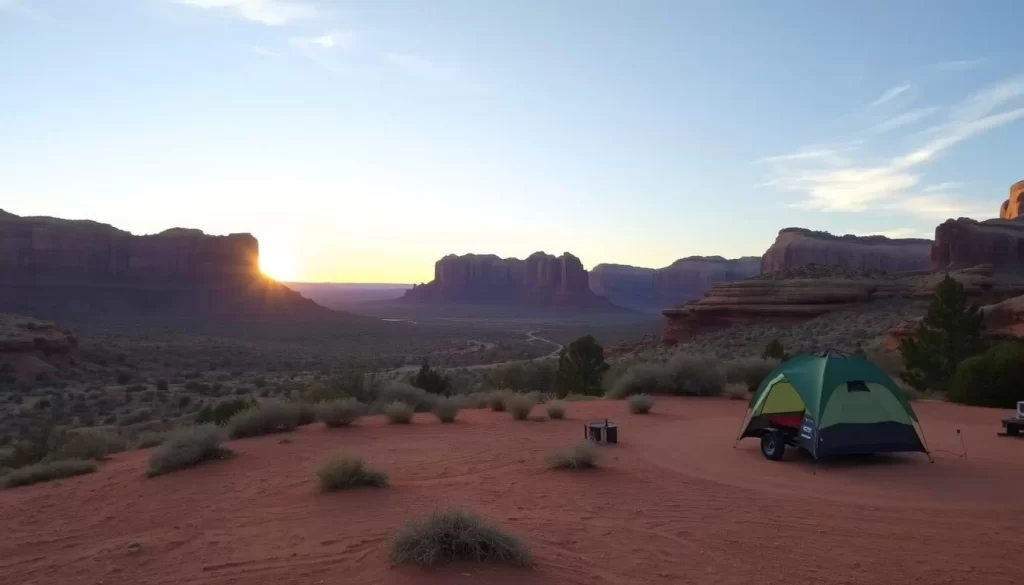
If you’re interested in camping, Dead Horse Point State Park has two campgrounds: Kayenta Campground and Wingate Campground. Both offer well-maintained sites with picnic tables, fire rings, and access to modern restroom facilities. You can experience the full beauty of the park by staying at one of these campgrounds.
Unique Yurt Accommodations
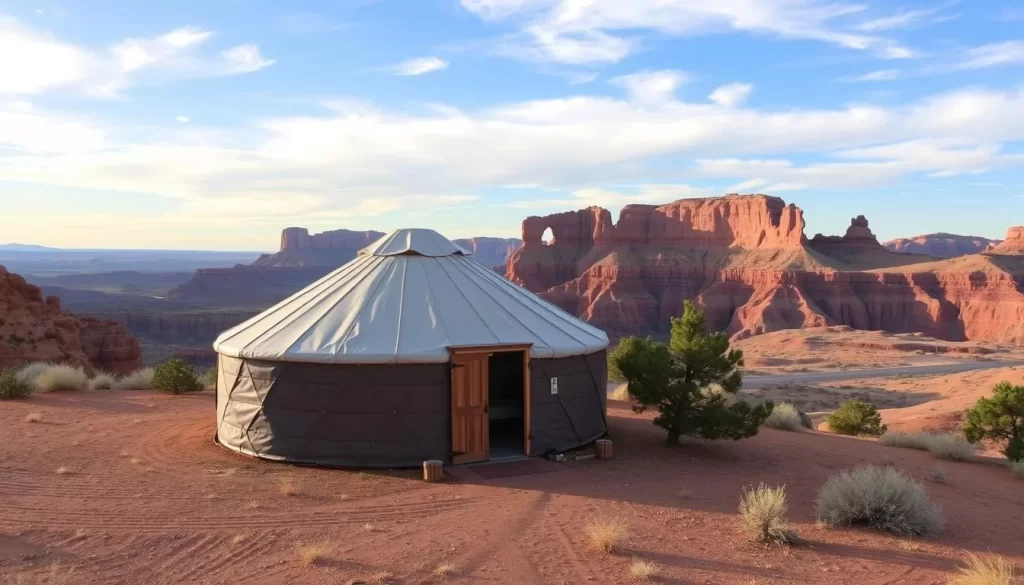
For a unique experience, consider staying in one of the park’s yurts, available at Moenkopi Yurts and Wingate Yurts areas. These yurts sleep up to six people, are equipped with heating, air-conditioning, electric outlets, and have propane grills on private decks. It’s a great way to enjoy the park’s beauty with some comfort.
Hotels in Moab
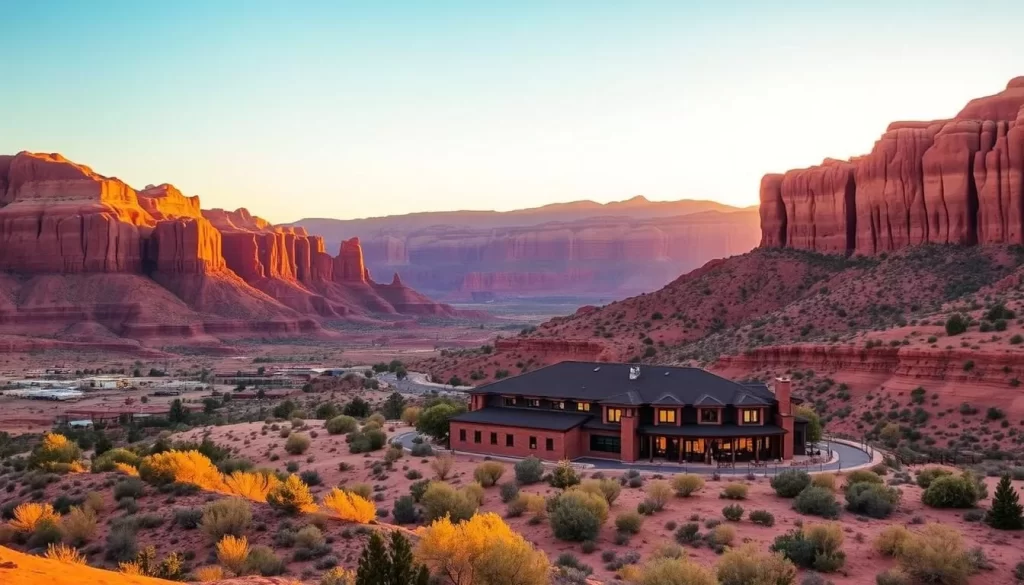
If you prefer more amenities, consider booking a hotel in Moab, just 40 minutes away from the park. Moab offers a range of hotels, from budget-friendly options like Red Cliffs Lodge and Hyatt Place Moab to luxury resorts like Hoodoo Moab. Staying in Moab allows you to explore not just Dead Horse Point State Park but also nearby Arches and Canyonlands National Parks.
Make sure to book your accommodations well in advance, especially during peak seasons, as both campgrounds and yurts tend to fill up quickly.
Making the Most of Your Visit
Maximizing your visit to Dead Horse Point State Park involves choosing the right activities for your time frame. With just 1-2 hours, prioritize the Dead Horse Point Overlook and a short hike to Meander Overlook for spectacular views.
For a more comprehensive experience, with half a day, park at the Visitor Center and complete the East Rim and West Rim trail loop. With a full day or more, consider adding mountain biking on the Intrepid Trail System or hiking to Bighorn Overlook. This state park is ideal for families, offering relatively flat trails with exciting scrambling sections.
